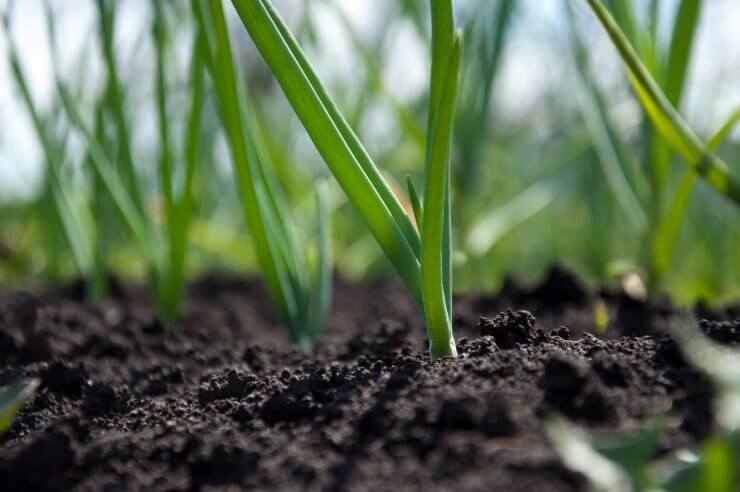
Scallions in rich soil
To have a successful scallion crop, you’ll need to have rich, well-draining soil. Start with good potting soil or garden soil, amended with compost. Scallions like soil with a pH between 6.0 to 7.0. Test your soil to see if it’s at the right pH level to welcome your scallions. If it’s not, then apply a balanced fertilizer to get the soil to the level you need.
Scallions like to settle into well-draining organic soil. If you’re preparing a garden bed—especially on open land—there are a couple things you need to do:
- Work organic matter (aka compost) into your soil to a depth of at least 6 inches.
- Make sure the growing area is free of debris and stones.
Plan your planting: rows should be about a foot apart.
Soil health is important; you don’t want to wear out your soil so it becomes unable to nurture your crops. One way to help keep your garden soil healthy is to rotate your crops. In the case of scallions, you only want to plant them in a given area that’s been scallion-free for at least three years.
Ideally, you’ll want to plant scallions in an area where peas or beans were last grown; that’s because peas and beans produce a lot of nitrogen, and scallions love nitrogen!
Companion planting doesn’t just sound good; it’s good for the plants. Since scallions have shallow roots that spread out about 6 inches, they’re great companions for deep-rooted vegetables, like cabbage, beets, carrots, and lettuce. The added benefit here is that the companion plants can help shade out any weeds that might compete for food with your growing scallions.
If you’re growing beans or peas, you can plant scallions nearby; just make sure they’re at least a foot away.
What type of soil do you use to grow your scallions? Do you use compost at all? What are your best tips for creating optimal soil for your scallions? Please share your techniques with us.


 Previous
Previous

